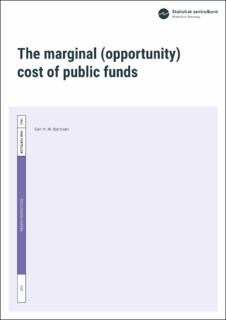| dc.contributor.author | Bjertnæs, Geir Haakon | |
| dc.date.accessioned | 2020-04-21T11:29:55Z | |
| dc.date.available | 2020-04-21T11:29:55Z | |
| dc.date.issued | 2020-04 | |
| dc.identifier.issn | 1892-753X | |
| dc.identifier.uri | https://hdl.handle.net/11250/2651884 | |
| dc.description.abstract | Several studies show cases where the Samuelson rule holds, or where the marginal cost of public funds (MCF) equals one within optimized tax systems. The conditions for the original Samuelson rule to hold in these studies are quite restrictive, and MCF measures employed are not consistent with MCF measures employed within real-world cost-benefit tests. The aim of the present study is to remove such restrictive conditions, and to construct a MCF measure designed for real-world costbenefit tests. The study shows that such a MCF exceeds one within optimized tax systems. Hence, the optimal supply of public goods is below the supply obtained by the Samuelson rule. The study further shows that income taxation below optimum requires an even higher MCF to prevent that public goods provision crowd out social security transfers with a higher marginal welfare gain. | en_US |
| dc.language.iso | eng | en_US |
| dc.publisher | Statistisk sentralbyrå | en_US |
| dc.relation.ispartofseries | Discussion Paper;No. 925 | |
| dc.rights | Attribution-NonCommercial-NoDerivatives 4.0 Internasjonal | * |
| dc.rights.uri | http://creativecommons.org/licenses/by-nc-nd/4.0/deed.no | * |
| dc.subject | Marginal cost of public funds | en_US |
| dc.subject | The Samuelson rule | en_US |
| dc.subject | Optimal taxation | en_US |
| dc.subject | Social security transfers | en_US |
| dc.title | The marginal (opportunity) cost of public funds | en_US |
| dc.type | Working paper | en_US |
| dc.subject.nsi | VDP::Samfunnsvitenskap: 200::Økonomi: 210::Samfunnsøkonomi: 212 | en_US |
| dc.source.pagenumber | 31 | en_US |

